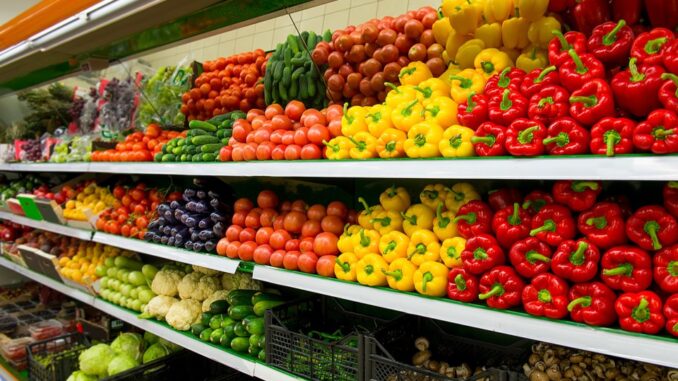
Amid year of high prices for food, many holiday staples are much more expensive this year. Families gathering for the holiday season may be feeling the pressure while grocery shopping.
With food prices soaring, Toronto resident Hadeel Ahmed, plans her meals a week in advance, and uses apps to sniff out deals before she even sets out for the grocery store.
“I’ll go through the local flyer for the store we’re about to go to, and see what’s on sale there, and that kind of informs the meal choices,” Hadeel said
Ahmed set a budget of $120 a week for grocery. While it was a reasonable amount for food shopping, she noticed that she has to be wiser with her choices and more stratigic before hitting the grocery store.
Hadeel is a full time minimum wage waitress. She makes an average of 5 k a month after the tips. But this was before the pandemic. “my income from tips is unpredictable as people are visiting the restaurant less frequently and if they do, they tip less.” Hadeel said.
As cost of living soars, millions of Canadians are turning to food banks
Inflation is cooling. The cost of living crisis is not
The slow down in grocery spending is obvious. Since food prices started to increase in the beginning of 2021. This is because the constatnt dolar sales-a measure of the volume of sales got a big punch. Shoppers are spending more but buying less. In 2022, current dollar sales at food and beverage stores were up 5.8%; when measured on a volume basis, sales were down 3.6%.
Consumer price index
Statistics Canada reported last month that prices for food purchased from stores rose 5.4 per cent in October 2023, down from an 10.1 per cent increase in the same time last year, but still it is above the inflation rate of almost 2 percent.
Statistics Canada has conducted a special household survey in 2022 that asked Canadians how they were coping with higher living costs. During the spring months, nearly three in four Canadians reported that rising prices were affecting their ability to meet day-to-day expenses. For many families, higher food costs were their biggest concern.
“One in five Canadians reported that they expect they are likely to obtain food or meals from a community organization in the 6 month proceeding the survey” said Analyst and Economist at Statistics Canada, Rhonda John-Huggins.
It is a challenge to put food on the Christmas table this year
A family of four will spend $16,288.41 on food this year ($1,357.37 a month)—that’s a rise of $1,065.60 from 2022 according to Canada’s Food Price Report for 2023. Consumers can expect food prices to continue to rise, the report predicts 5% to 7% food price increase in 2023, with the most substantial increases in vegetables, dairy, and meat.
People aren’t going to eliminate Chritmas dinner altogether, that’s too drastic. But many households are against the wall with the prices of gas and housing being still so high. A survey finding from the Agri-Food Analytics Lab at Dalhousie University, showed that Canadians are looking for creative ways (to save). Maybe they do a little more “potluck” things this year.
More Canadian are shifting habbits, over 85% of Canadians consider themselves price conscience! encompassing the utilization of coupons, apps, loyalty programs, and referencing flyers. Other are changing their shopping destinetion, makeing more frequent visits to the dollar store. While some are making nutritional compromises.
Agri-Food Analytics
Whereas there are many steps that take the food products from the production line to the consumer, factors like the Russian invasion to Ukrain made the supply chain of wheat products an uphigh hill to climb. This is because both countries are a main producers and are pressuring the global market by interbting their contribution.
We cannot deny the role of the largest grocery tycoons in the game. While StatsCan has pointed many factors that influenced higher food prices. The high profit driven grocery oligopoly is dominating the market.
Companies like Metro, Loblaws, Walmart, Sobeys and Costco are claiming that inflation is what causing prices to soar, in various media statements. A lot of Canadians believe that those companies are using inflation as a cover.
Loblows chain claims that the increase in overall sales profit are up overall across the company’s various holdings, most of the improvement has come from booming trade of higher margin goods like cosmetics and medicine at Shoppers Drug Mart, clothes at Joe Fresh, and the company’s financial services arm, PC Financial. On food alone, profit margins are thin.
Profit of Grocery Chains
Even if Canadians take them at their word, grocery margins — essentially the amount a company books in profit on every sale after all of its costs have been subtracted — may indeed be about the same as they always have been: in the low single digits.
But economists and financial experts say that doesn’t mean the big grocery chains aren’t benefiting from the current era of high inflation. Also, Canada’s grocery business doesn’t have enough competition — and shoppers are paying the price
Loblaws, Metro and Sobeys owner Empire — along with foreign players like Walmart and Costco controll Canada’s grocery business.Together, those 5 companies combine for more than three-quarters of all the food sales in Canada. Canada needs solutions to help bring grocery prices in check, more competition is a key part of the answer.

Be the first to comment